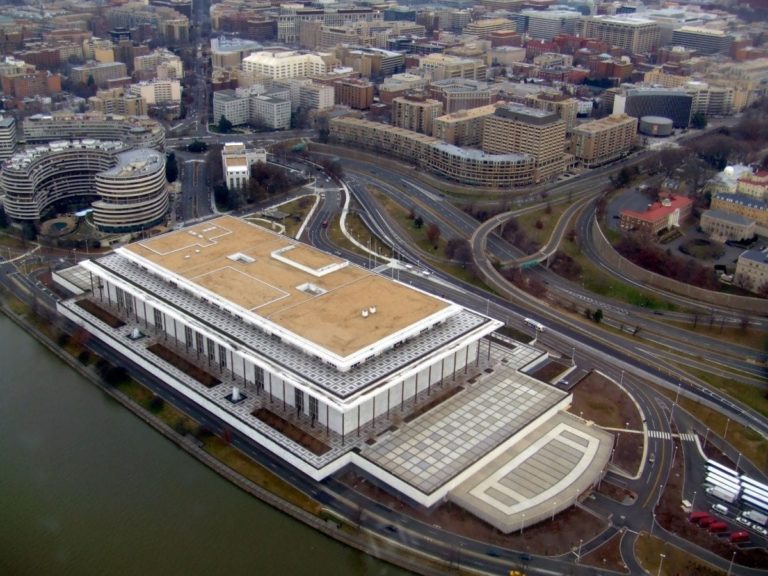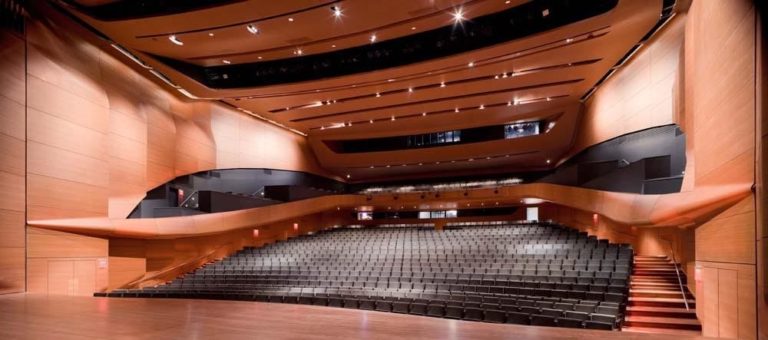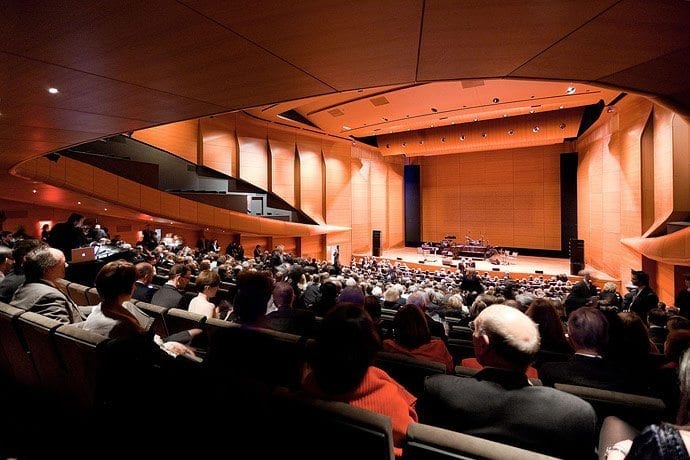The venues we see music are more than just a place to congregate to experience concerts and performances. The work that goes into architecture – the designing, creating and building these venues is a lengthy process that spans years, well before patrons take their seats or find dance space to enjoy the sound. Architects, engineers and consultants contribute to the development of the overall sound, acoustics and open space that factor into the finished product – a music venue with, in more and more instances, incredible acoustics and sound.
To shed some light on the architecture side of designing music venues, spoke with Matthew Geiss, AIA, NCARB, Principal and an Adjunct Professor at The Catholic University of America’s School of Architecture and Planning. A graduate of the School of Architecture at Syracuse University, Geiss spoke with Pete Mason to discuss the ‘how’ of music venues and acoustics as the latter grows in importance throughout the design and construction process.
Pete Mason: When the design process for a music venue begins, what factors are brought into play initially for the rest of the design to build around?
Matthew Geiss: It depends on the type of venue and primarily whether or not it will be new construction or a renovation of an existing space. Many large music venues need to be multifaceted (can be used for multiple types of events). Typically, the larger the number of functions a building is designed to accommodate, the less it can actually perform for each individual function. In other words, if a building is designed to accommodate live bands, theatre, orchestral performances, etc…- due to the different requirements for each function – choices need to be made to maximize the benefit of each without creating a negative impact to any of the other functions.
If it is new construction, the primary factors are the site – how large will the building be, how will people enter and exit, what other buildings surround the building site, etc… – and the function – how will the building be used, how often will it be used, how many people are to be accommodated, etc…

PM: How are acoustics and the flow of music built into the design in a way that does not affect the overall structure of the building? How can acoustics be worked into a building without making the overall structure unappealing, or worse, unsafe?
MG: With most performance spaces, acoustical design is something which is inserted into the building to capitalize on the performance. In most cases (such as the Alice Tully Hall renovation at Lincoln Center by Diller Scofidio and Renfro) the acoustical elements of the interior are slid into the shell or structure of the space like a sleeve. Structural requirements will generally interfere with acoustical requirements of the space so the two are generally separated. Typically the building will have a structure, with a skin on the outside (enclosure) and a skin on the inside (the acoustical, aesthetic or finished space). Of course, these are generalizations. Many Gothic and Romanesque churches, domed spaces (such as the baptistery in Pisa) have incredible acoustical properties where the structure, enclosure and finished space are one and the same.

PM: How long does the process for designing, drafting and building a music venue take, in years?
MG: This is a difficult one to generalize as it will have a huge range depending on the building type, finishes, site conditions, etc… A small interior retrofit or renovation may happen within the span of a year or two (from initial design to completion of construction), where a large performance space will likely take in excess of 5 years from initial design to the completion of the structure.

PM: When it comes to the process of designing a music venue, what would surprise music fans the most?
MG: I would say that the most surprising element might be the large number of people involved in the design and the collaborative process which is required. When I was working at STUDIOS Architecture here in Washington, DC, we designed the performance studio at XM Radio Headquarters here in town. We had a team of over 20 people (acoustical consultants, electrical engineers, mechanical engineers, structural engineers, and architects) working on the design of only two rooms.

PM: Considering the great many music venues in America – what are some of the best venues for sound and acoustics, that you have come across in your experience?
MG: The Kennedy Center in Washington, DC; Alice Tully Hall in Lincoln Center, NY; 9:30 Club, Washington, DC.


Comments are closed.